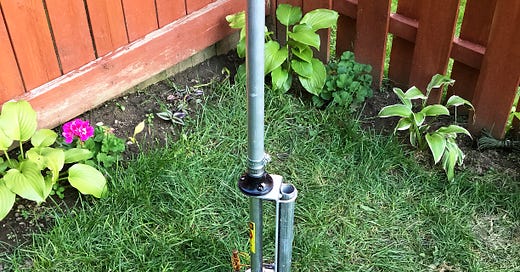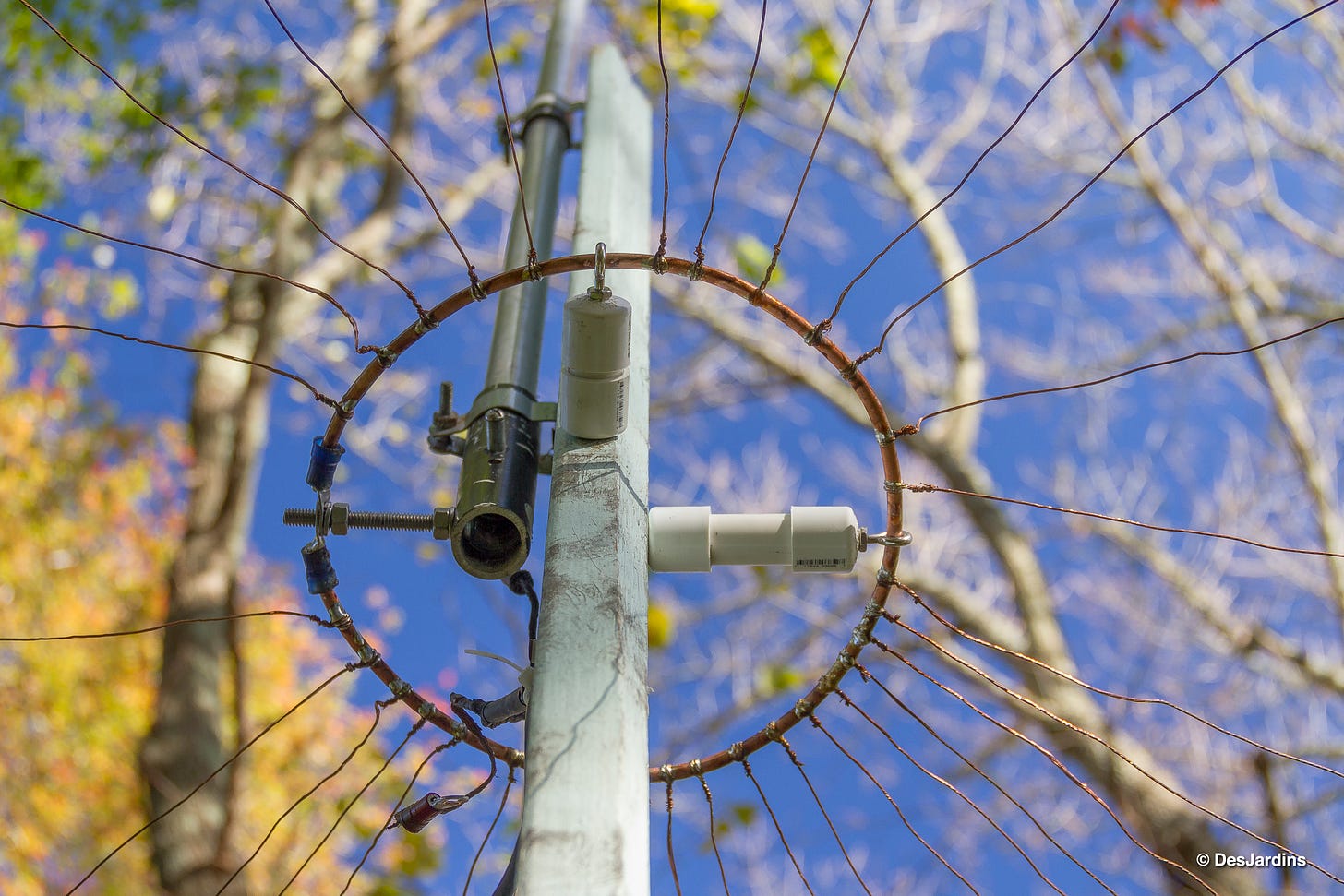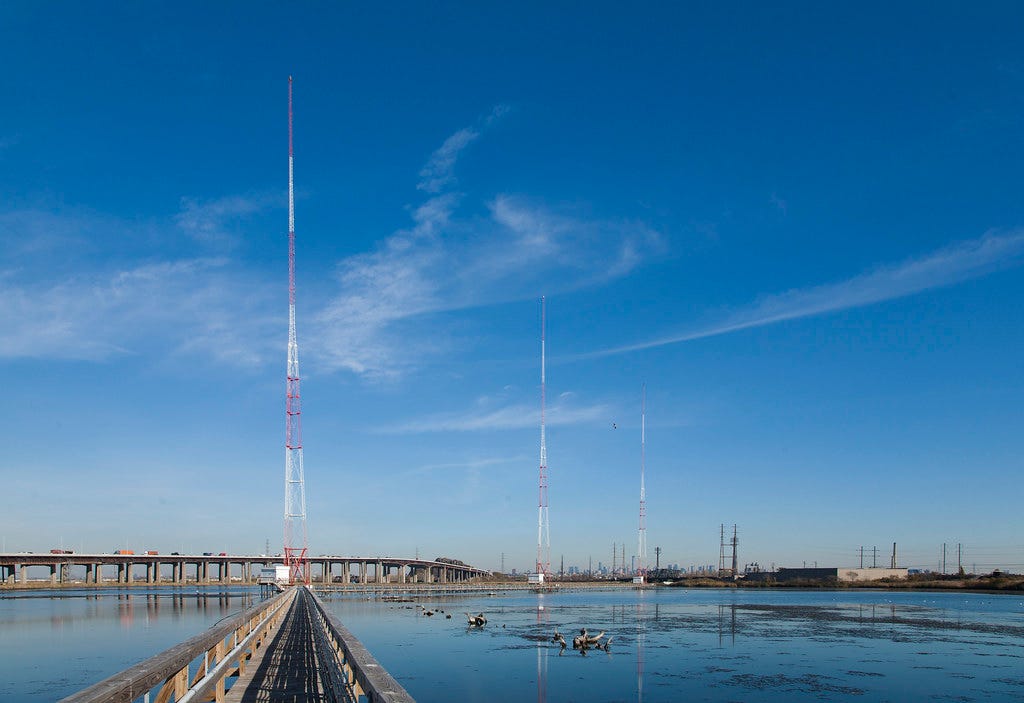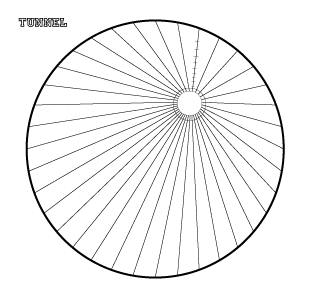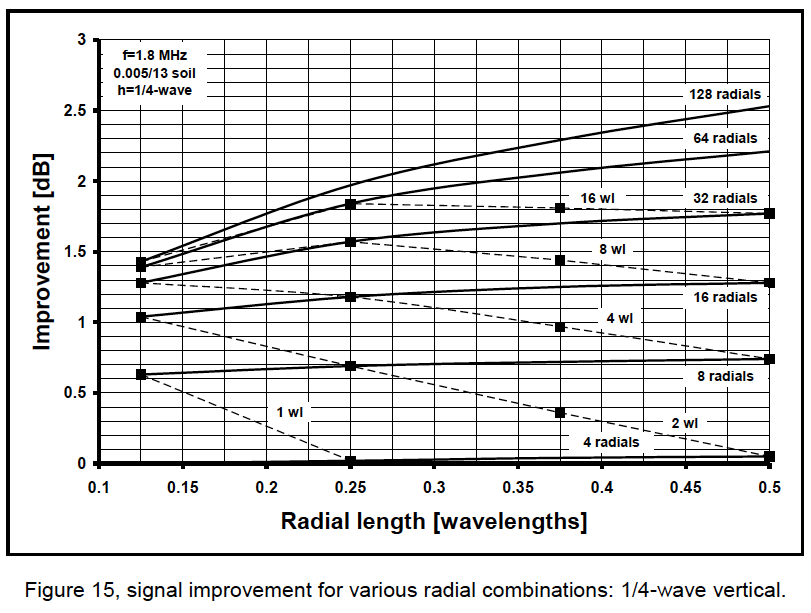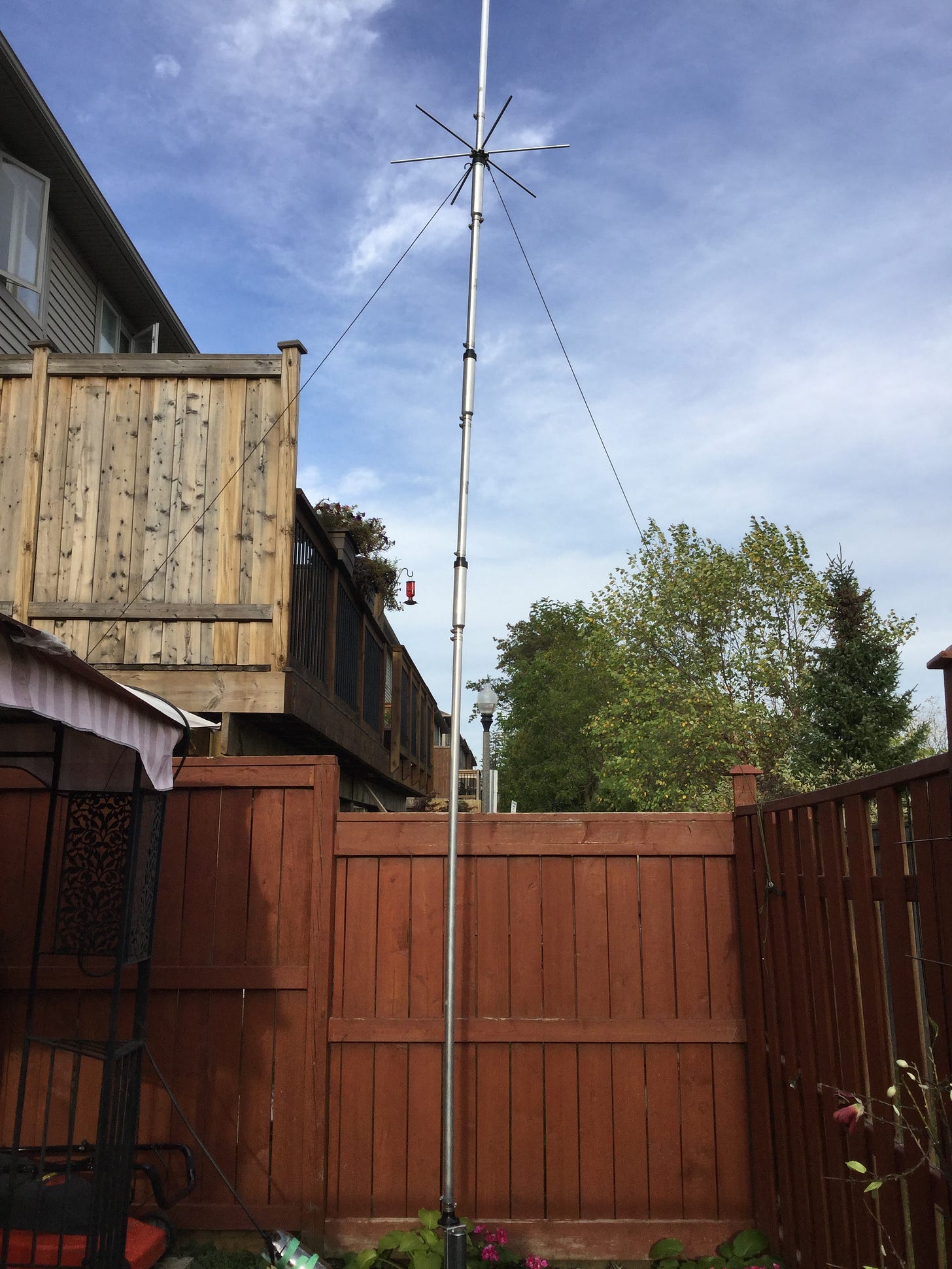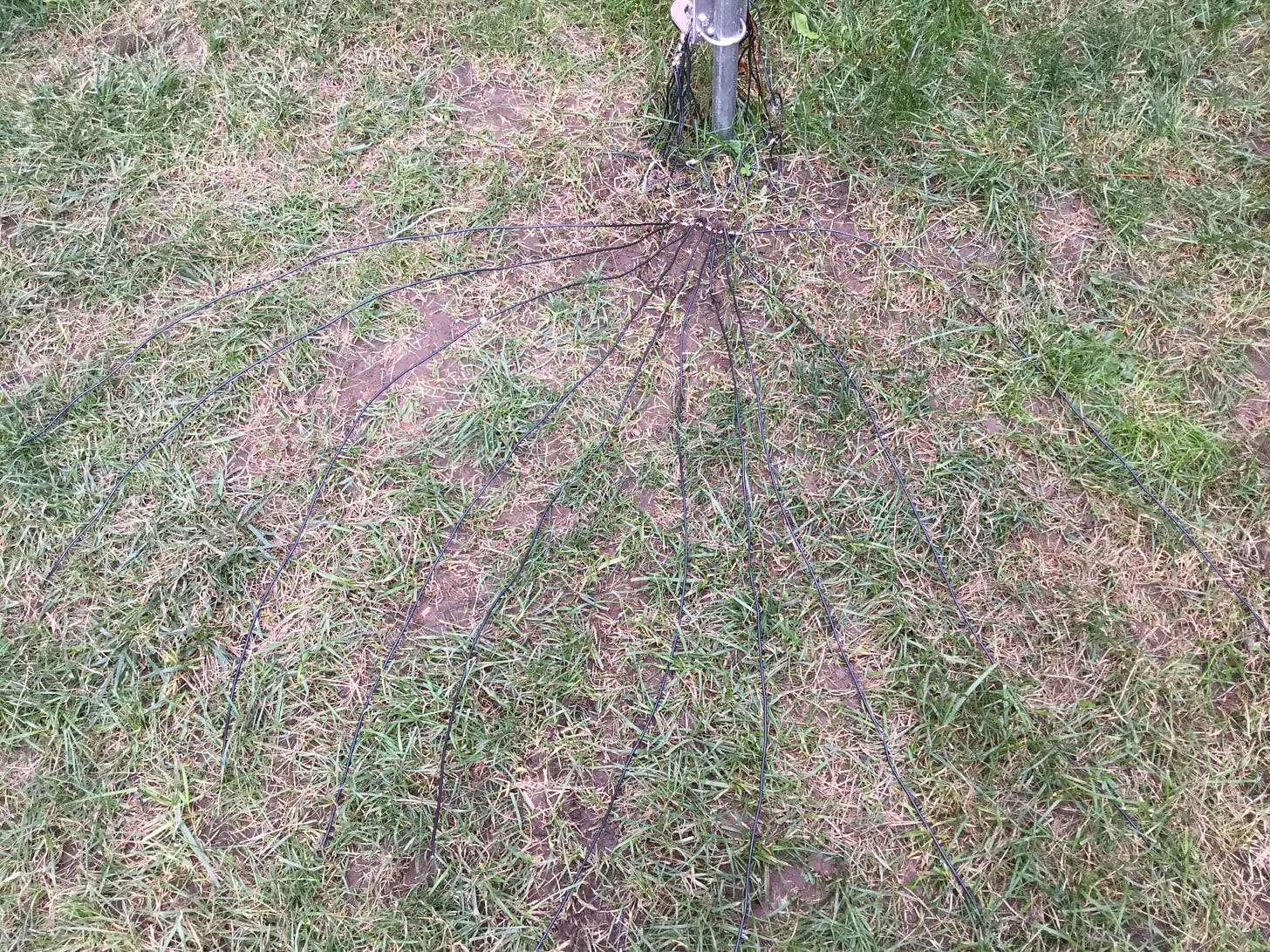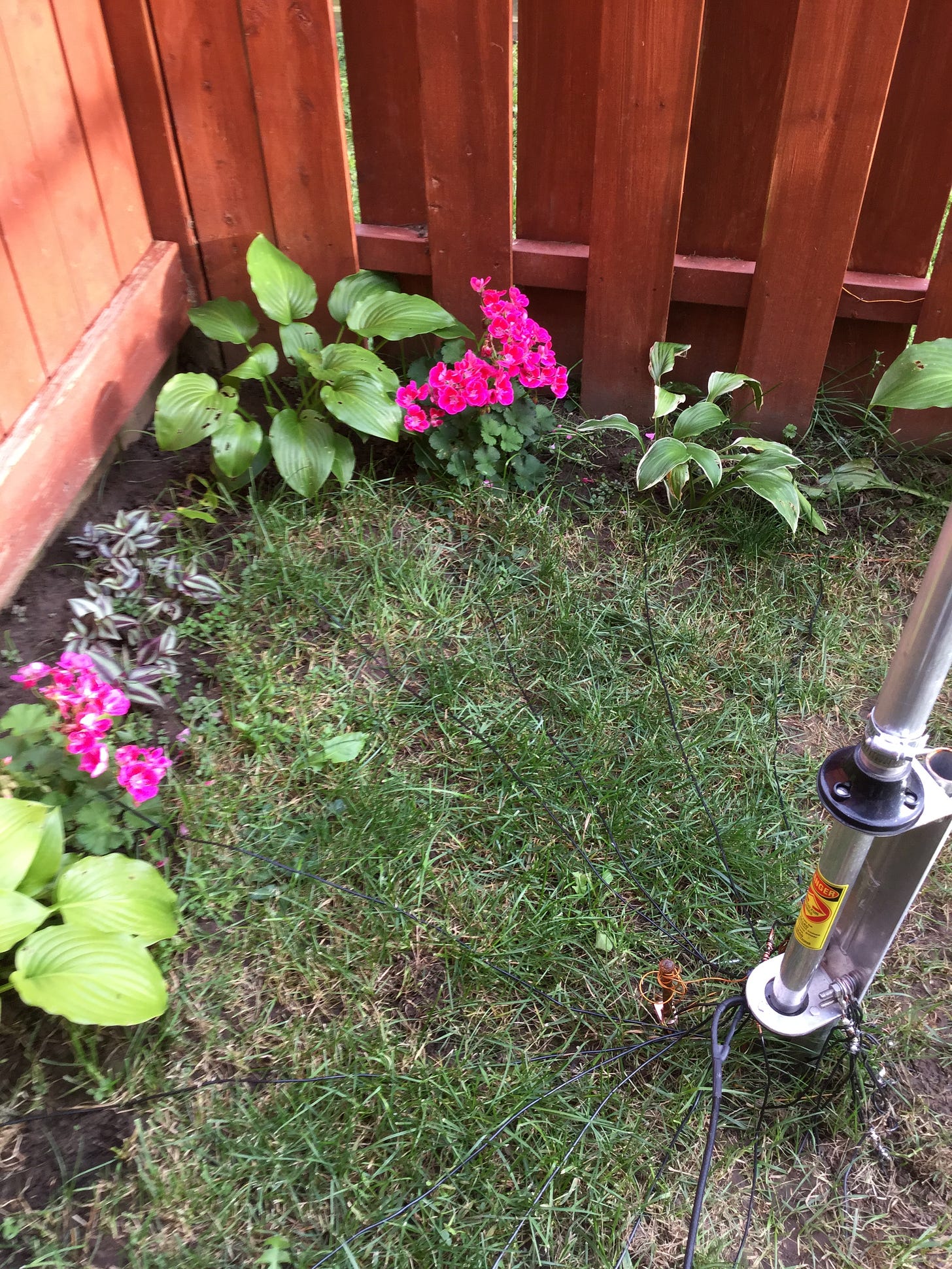Return currents sought by ground radial systems are concentrated around the bases of verticals, and fall off the further we move away.1 When full-sized radials cannot be installed, it is OK to use shorter radials. In Chapter 9, we derived this from the 1937 engineering “ideal” of 120 radials, still cited years later in the 1952 diagram, below.
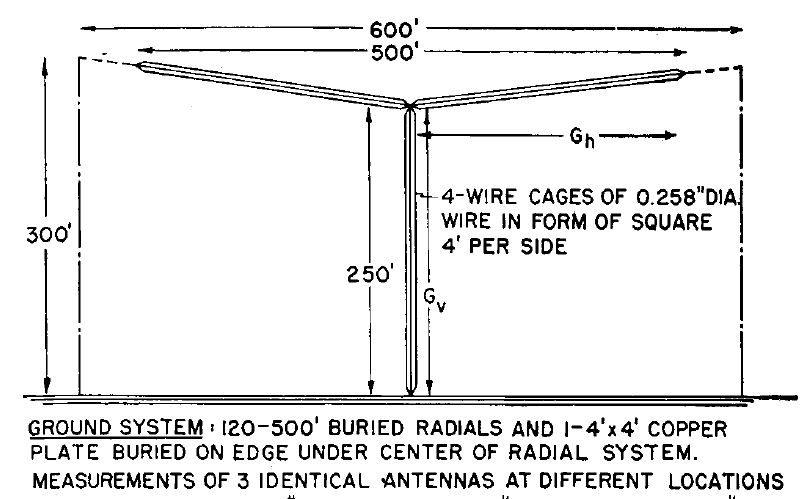
Supersaturation
Ground radials merge the closer they get to the vertical. At some point the spacing between them is less than necessary to collect all of the return currents. When this occurs, the area around the base of the vertical can be considered supersaturated with ground radials. If we add more, they do not increase the collection of return currents. Further out—yes. But not within this area.
1937’s Optimum End-Tip Spacing: .0523 rad
The reason 1930s broadcast engineers identified 120 1/2-wavelength radials as “ideal” is because this number of radials establishes a spacing between their ends enhancing the collection of return currents from the outermost region of the radial field. As a result, the entire radial field is deemed as collecting return currents with optimal efficiency, causing 120 to be anointed as the “ideal” number of radials to use by 1937 engineers, FCC officials and the ARRL.2
End-Tip Spacing Expressed in Radians
Our discussion of this topic in Chapter 9 used the number of radials provided in the 1937 example to calculate their end-tip spacing in radians. Once derived, we used this “radian number” to optimize ground systems installed in irregularly-shaped, limited spaces.
This does not mean that radial systems optimized for limited spaces collect as much return current as the 1937 behemoth. What it does mean is that these radial systems collect return current from these smaller areas as optimally as the behemoth would from these same small areas.3
Gedankenexperiment
Imagine you installed 120 half-wave ground radials in the backyard around your Buternut vertical. If you did, your radial field would be as good as that of any AM broadcaster’s out in the Meadowlands of New Jersey. Why? Because both systems have the same number of ground radials.4
We’re Not in Kansas Anymore
Unfortunately, you do have obstructions—beginning with your house, the white picket fence around your property and your wife’s petunia patch. These obstructions force you to trim your radial field up to your house’s foundation, along the fence line and around the flowerbed. After this haircut, your radial field no longer equivocates that of the commercial broadcaster’s. But luckily, you’ve trimmed away its outermost regions where return currents are sparser than they are closer in around the base of your vertical. This is your only consolation.
Filet Mignon vs Rump Steak
Although you cut away the outer region of your radial field, the filet mignon area around the base of your vertical remains intact; it still has the same number of radials as the commercial broadcast antenna in the Meadowlands. Both ground systems are equally efficient up until the point where you cut yours off.
We Don’t Need No Education
Thus we can say that the ground radial density established by using 120 full-sized radials is replicated in limited spaces over areas where the same number of radials are laid on the ground—even if only for a few feet. This runs contrary to the belief amongst hams that there is no reason to lay down short radials.5 Dispelling this notion is the first step towards improving the near field efficiency of backyard verticals.
A Final Caveat
Since we are compelled to trim off the outermost region of our 120 radial field, we no longer need 120 radials. This is because we used 120 radials to collect currents way out in the radial field. If we snip off this region, we can lower the number of radials. This is why Severn’s “number” curves converge as radial lengths get shorter; the closer we get to the vertical, the fewer the number of radials needed to grab current.
Severn identifying curves by their number of radials means he could have also identified them by their end-tip spacings expressed in radians.
Let’s change gears and check out a real world story told by a Canadian ham about what happened when he started laying down radials in accordance with this discussion.
The Real World Experience of James Thomas, VA3JT
After listening to Bill, W1ZY, on forty meters testing his phased verticals, I decided to give him a call. I gave him a five nine plus thirty report. I won’t tell you the report that Bill gave me, but I will tell you Bill gave me some amazing advice. Advice I would like to share with all of you who are living in restricted housing complexes. I couldn’t wait until the next morning to get started.
For 35 years I lived on the top floor of a 22 story building overlooking Lake Ontario. The 360˚ view was spectacular — water for as far as you could see. My rig was a Drake line with a linear amplifier. The antenna was a three-element beam up on the roof. I was in Ham Heaven. In the winter, I would lock the door and go to 6Y5-land. As the years passed by, however, I started to get lonely. One day I was having lunch in a Chinese restaurant with a buddy and this beautiful lady walks in. She was definitely takeout. Two weeks later we were married. It was December 11, 2004.
After getting hitched, my apartment was now too small. I had to move. I realized this when I was up on the roof one late afternoon working on the antenna. I knew in my heart it would be my last sunset from that roof. I gave my station to a friend who put it in storage. My wife and I then moved to a small town in the middle of a complex surrounded by other homes. Our backyard was now 20ft x 20ft. I was off the air for twelve years. I tried Echo-link. I tried two meters. Neither did anything for me. I wanted to work DX.
Upon returning home from winter vacation one year, I looked out the back window to discover that my neighbors had fenced in their backyard. The next day I decided it was time to get back on the air. I borrowed a rig from a friend and put up an inverted Vee, its apex hanging from the bedroom window. I was getting out.
A few days later, after the neighbors inquired about the wires in my backyard, I put up a Hustler vertical. I bought it because I was told it didn’t need radials. The only place I could install it was in the corner of the yard next to the fence. I drove a three-foot pipe into the ground and mounted the vertical to it without any radials. And that was it. Because of the weak signal reports I was getting, I added four ¼ wavelength radials for 40 meters, zig-zagging all around the backyard. This caused a slight improvement.
I am from the old school that taught us ground radials had to be a ¼ wavelength long. After listening to Bill, W1ZY, I realized that what I had been taught constituted the immaculate misconception.
Radials don’t have to be ¼ wavelength long. With a vertical antenna you are only half way there. The more short radials you add around its base, the better off you are. I went through the junk box looking for wire of any length I could find.
Following W1ZY‘s advice, I eventually buried fifty-two (52) short radials around the base of the vertical. I was so excited burying radials that I got carried away. Here is the progression.
20 radials @ 3ft
10 radials @ 4ft
4 radials @ 8 ft
12 radials @ 15 ft
4 radials @ 16 ft
2 radials @ 33 ft
Running 100 watts on 40 meters produced the following “average” signal reports:
4 radials, 5&5.
20 radials of varying lengths, 5&9.
33 radials of varying lengths, 5&9+15.
When I got up to 52 radials of varying lengths, there was no difference. So I settled for 33. I was once again talking to the world! Europe, Central & South America, South Pacific, South Africa — all with 59+ reports. I checked into East Cars and was told I was the fourth strongest signal on the band.
So, don’t be afraid to experiment. And to listen to those who have been there and succeeded. Do I miss the view from the top of that building? No way! This morning I came upstairs from the shack with a smile on my face, causing the XYL to remark, “You look radiant this morning.” I said, “Thank you dear. What can I do for you?” Her reply, “Put four low-profile radial tires on the car.” I was happy to accommodate, for when I brought the car home from the shop, the XYL went out. And I went back down to the shack.
Saltwater Verticals & Phased Arrays is reader-supported.
According to 1937 engineers, near field return currents fall off precipitously 1/3-wavelength away from a vertical irrespective of its height (e.g. length).
You gotta stop somewhere.
And use a fewer number of radials while so doing.
The radials in the two systems have the same electrical length.
The fact of the matter is the shorter the radial runs afforded in limited spaces, the fewer radials you need to install—with sixteen (16) being the minimum. What this means is that there is very little to be gained by laying down 120 or 64 short radials in a situation where you already got 16—or better yet 32—deployed. ;D
